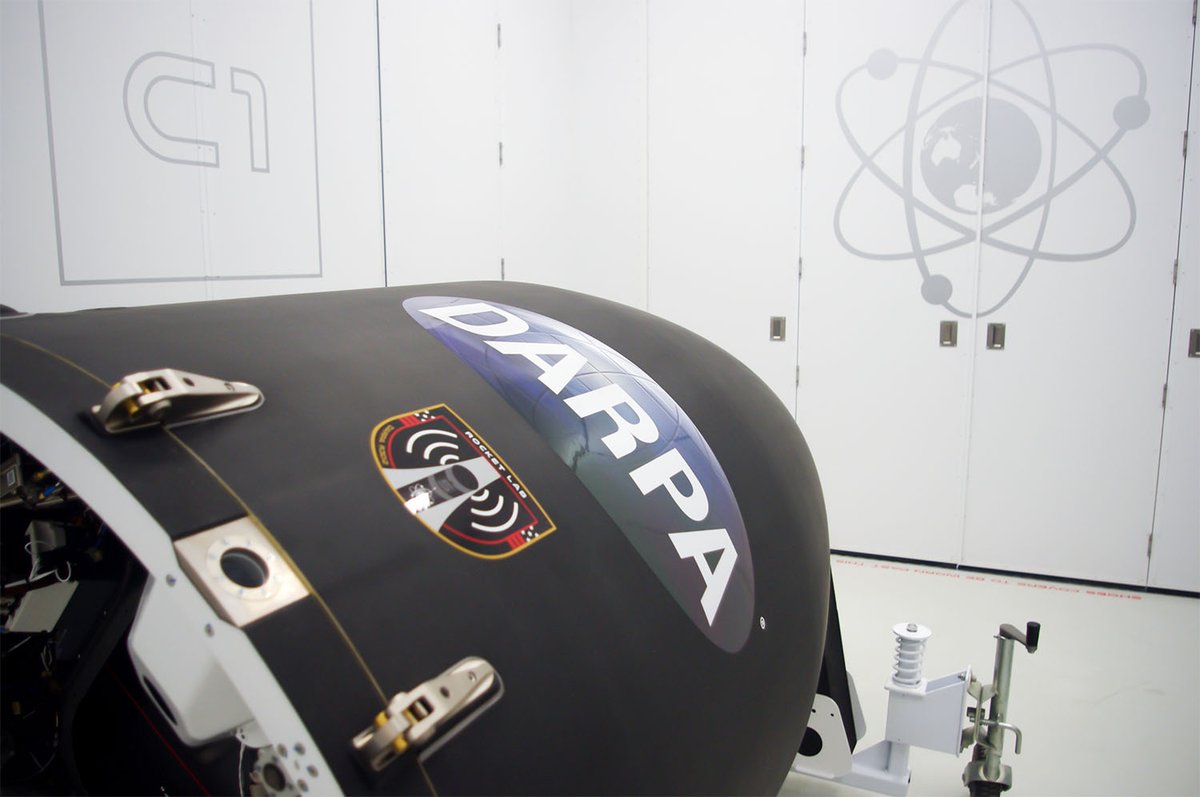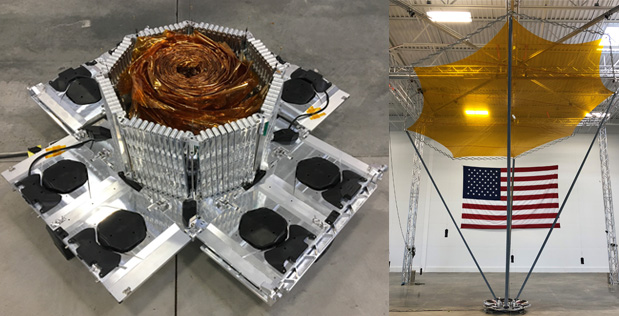Rocket Lab to Launch R3D2 Prototype for DARPA! Here's How to Watch.
Liftoff is no earlier than 6:30 p.m. EDT/2230 GMT).

Update for 7:22 p.m. EDT (2322 GMT): Rocket Lab has called off today's launch attempt of an Electron booster carrying DARPA's experimental R3D2 satellite due to a video transmitter issue. A new launch date will be announced once it has been selected.
Original story: The commercial launch provider Rocket Lab is counting down to its first flight of 2019, an experimental satellite for the U.S. military, and you can watch it live online today (March 24).
A Rocket Lab Electron booster will launch the R3D2 satellite for DARPA, the Defense Advanced Research Agency. Liftoff is set for no earlier than 6:30 p.m. EDT (2230 GMT) from Rocket Lab's Launch Complex 1 on the Māhia Peninsula in New Zealand, where it will be Monday local time. Rocket Lab has a four-hour launch window for the flight.
You'll be able to watch the Rocket Lab launch on Space.com, courtesy of the company's livestream. You can also watch it directly from Rocket Lab here. The webcast will begin 15 minutes before liftoff, and could begin later in the launch window if needed.
Related: Rocket Lab's 1st Commercial Launch in Pictures
"Weather is looking great for Sunday UTC," Rocket Lab CEO Peter Beck wrote on Twitter last week.
Today's liftoff will mark the first launch of the year for Rocket Lab, which hopes to follow it with monthly flights throughout 2019. The mission has been delayed since February due to a DARPA holdup in delivering the R3D2 satellite to Rocket Lab's launch site.
Get the Space.com Newsletter
Breaking space news, the latest updates on rocket launches, skywatching events and more!

The R3D2 satellite (its name is short for Radio Frequency Risk Reduction Deployment Demonstration) is a test flight aimed at demonstrating a new type of space antenna, according to DARPA. The 330-lb. (150 kilograms) payload is a tightly packed "membrane reflectarray antenna" made of tissue-thin Kapton that is designed to unfurl out to a maximum diameter of nearly 7.3 feet (2.3 meters).
"R3D2 will monitor antenna deployment dynamics, survivability and radio frequency (RF) characteristics of a membrane antenna in low-Earth orbit," DARPA officials wrote in a statement. "The antenna could enable multiple missions that currently require large satellites, to include high data rate communications to disadvantaged users on the ground."
The satellite took just 18 months to design and build, according to DARPA.
"A successful demonstration also will help prove out a smaller, faster-to-launch and lower cost capability, allowing the Department of Defense, as well as other users, to make the most of the new commercial market for small, inexpensive launch vehicles," the agency wrote.
Rocket Lab's Electron booster is a small launch vehicle designed to launch payloads of up to 496 lbs. (225 kilograms) into low-Earth orbit. The rocket has a Kick Stage upper stage to deliver payloads into a target orbit.
In a January statement, Beck said the Huntington Beach, California-based Rocket Lab was excited to launch the R3D2 mission from DARPA .
"Rapid acquisition of small satellite launch capabilities is increasingly important to US Government organizations like DARPA," Beck said. "The ability to rapidly space-qualify new technology and deploy space-based assets with confidence on short notice is a service that didn't exist for dedicated small satellites until now."
- Rocket Lab Launches 13 Cubesats on 1st Mission for NASA
- Rocket Lab Picks Virginia Spaceport As US Launch Site for Small Satellites
- Changing the Launch Equation: Q&A with Rocket Lab CEO Peter Beck
Insert quote here
Email Tariq Malik at tmalik@space.com or follow him @tariqjmalik. Follow us @Spacedotcom and Facebook.
Join our Space Forums to keep talking space on the latest missions, night sky and more! And if you have a news tip, correction or comment, let us know at: community@space.com.

Tariq is the Editor-in-Chief of Space.com and joined the team in 2001, first as an intern and staff writer, and later as an editor. He covers human spaceflight, exploration and space science, as well as skywatching and entertainment. He became Space.com's Managing Editor in 2009 and Editor-in-Chief in 2019. Before joining Space.com, Tariq was a staff reporter for The Los Angeles Times covering education and city beats in La Habra, Fullerton and Huntington Beach. In October 2022, Tariq received the Harry Kolcum Award for excellence in space reporting from the National Space Club Florida Committee. He is also an Eagle Scout (yes, he has the Space Exploration merit badge) and went to Space Camp four times as a kid and a fifth time as an adult. He has journalism degrees from the University of Southern California and New York University. You can find Tariq at Space.com and as the co-host to the This Week In Space podcast with space historian Rod Pyle on the TWiT network. To see his latest project, you can follow Tariq on Twitter @tariqjmalik.









